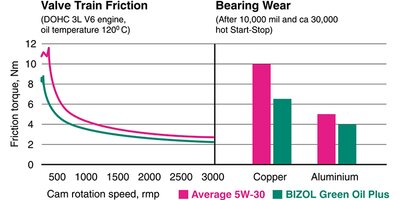THE QUICK FIX FOR ENGINE RUNNING PROBLEMS
High fuel consumption or poor idle?
What is causing increased fuel consumption and poor idle behaviour? Why is the engine management light on? Common faults caused by a dirty MAF sensor include: rough running at idle, increased fuel consumption, low power, poor throttle response, poor starting and black smoke (diesels). Even the dreaded check engine light (MIL) lighting up can be a sign of dirty MAF sensor.
A multitude of engine running faults can be traced back to the fuel system. Diagnostic trouble codes, such as P0100, P0101, P0102, P0103 or P0104 are often caused by something as simple as a dirty mass airflow sensor.
How does the mass airflow sensor cause faults?
Oil, dust and soot (in diesels) mix in the inducted air inside the intake tract leaving a varnish. The varnish goes to the intake hoses, throttle body and MAF sensor. The gradual build-up of these deposits is where the trouble starts…
What does the MAF sensor do?
The MAF sensor measures the amount of air entering the engine and generates one of signals needed for engine management. To measure the flow of air, the sensor heats up a section of wire (or film), the temperature of this wire (or film) is kept constant. However, when the air flow fluctuates, the electrical current required to maintain the predetermined temperature rises and falls accordingly. The MAF produces a signal which is dependent on the fluctuations in airflow. It then send it to the powertrain control unit (PCU). The PCU uses this signal (and others) to calculate current engine load and change the injection duration according to what is mapped in the PCU, i.e., adjusting the amount of fuel injected.
If the´re is dirt on the electrical resistance of the sensor, for example, the MAF sensor will eventually send a false signal to the PCM. This can cause faults like poor idling or increased fuel consumption and sometimes even causing the check engine light to illuminate.
How can engine running faults be rectified?
Well, before picking up the phone to order a new part or performing (possibly inconclusive) diagnostic testing, the simplest method is often just to remove the MAF sensor and clean it. You can do it with a dedicated spray, such as BIZOL Mass Air Flow Sensor Clean+c38. It is a specially formulated spray, which is not aggressive and is safe for regular use on sensitive electronic components.
By the way, cleaning the MAF sensor will benefit sensor operation in any event! Even if a dirty MAF sensor is not the root cause of the fault. You may consider cleaning the MAF sensor as an initial fix. But is also a cheap, effective and easy way of eliminating a fault and will improve running characteristics regardless of any other faults.
How do I get access to the MAF sensor?
The MAF sensor is located in the air induction hose just downstream of the air filter housing, often immediately adjacent to it. You should always remove the MAF sensor/unit from the intake tract before cleaning.
First, disconnect the multiplug from the MAF sensor and, subsequently, the air intake hose coming from the air filter housing. Now disconnect the sensor housing from the induction hose. Remove the MAF sensor/unit from the car. Now you have access to the sensor and need can simply spray the sensor inside its housing. Note, there is no need to wipe down or dry the components as BIZOL Mass Air Flow Sensor Clean+c38 has a fast-drying formula that leaves no residue.
As some MAF sensors have a strainer or gauze, you may have to remove the MAF sensor from its housing, where possible, to access and clean the sensor.
Now that the MAF sensor is clean, just reassemble and you´re done!

You might also like

Prof. Dr. Boris Zhmud, Head of R&D, BIZOL Germany

Within the realm of automotive care, few substances are as vital as motor oil, in ensuring the seamless operation of a vehicle's propelling device. It serves as the lifeblood of a motor, ensuring that the intricate machinery operates efficiently and without unnecessary friction. The functions of motor lubricant substance extend far beyond just lubrication, encompassing a range of critical tasks that contribute to the longevity and performance of a propelling mechanism. In this article, we’ll delve into the multifaceted functions of motor oil and explore how it plays a pivotal role in maintaining the health of automotive powerhouses.

The modern marvel of an internal combustion motor powers our vehicles, providing the strength and reliability we rely on for daily transportation. However, just like anything else subjected to constant use, motorized units experience wear and tear over time. Component deterioration can significantly impact performance and longevity. In this article, we will delve into the intricacies of engine wear meaning, explore the various causes behind it, provide actionable tips to reduce and prevent it. Furthermore, we will look at how specialized engine oils, such as BIZOL, play a crucial role in safeguarding your engine’s health. Let’s begin by understanding what engine wear is and the factors that contribute to it.

